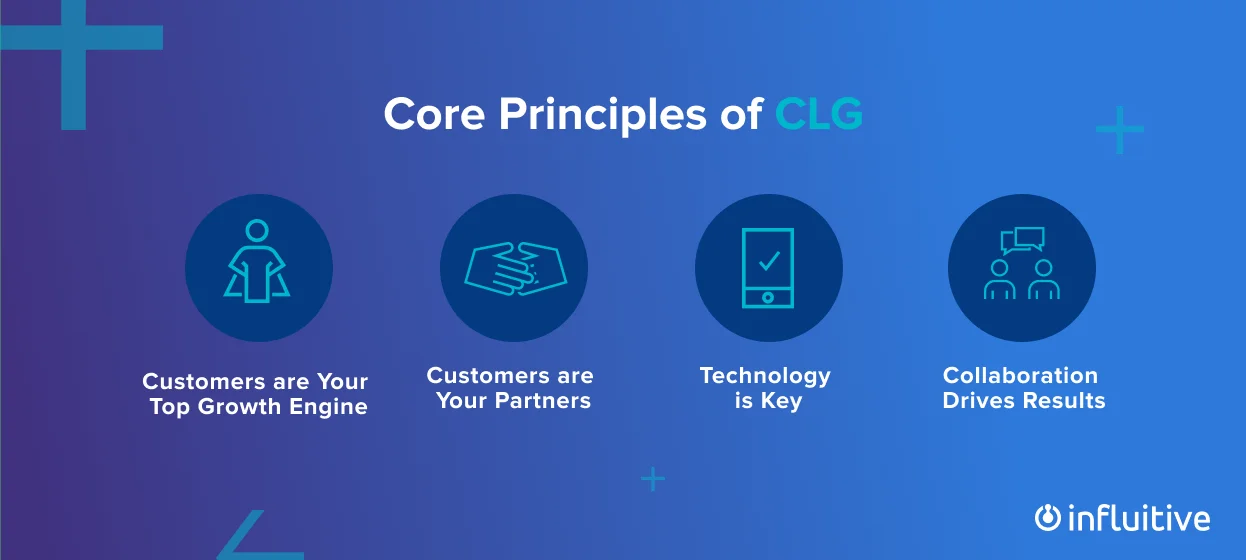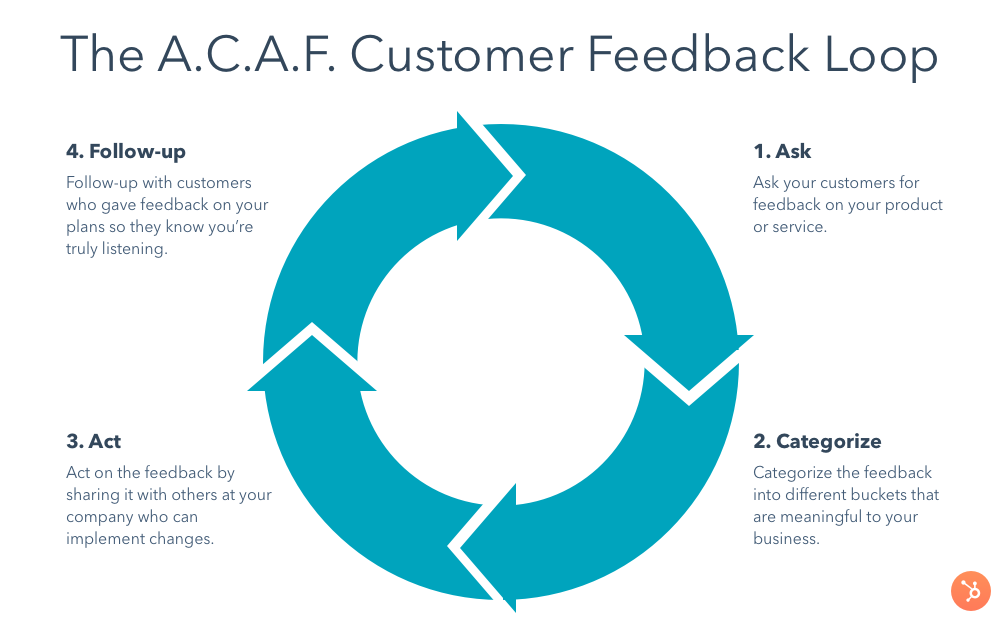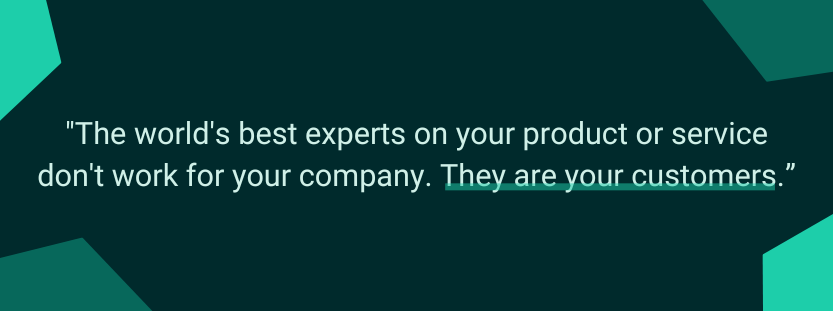.jpg)
Jump to Section:
- Strategy 1: Build a Customer-Centric Culture
- Strategy 2: Listen to Customer Feedback
- Strategy 3: Personalize the Customer Experience
- Strategy 4: Collaborate with Customers in Product Development
- Strategy 5: Measure and Optimize Customer-Led Growth
In today's fast-paced and ever-evolving business landscape, one thing remains constant: the customer is king. To thrive in this dynamic environment, companies must shift their focus from traditional growth models to strategies that prioritize the customer's needs, preferences, and satisfaction. This shift in mindset and approach is what we refer to as "customer-led growth."
Customer-led growth is not just a buzzword; it's a fundamental shift that has the potential to reshape the way businesses operate and succeed. It's about recognizing that your customers hold the key to sustainable growth and profitability. It's about actively involving your customers in shaping your products, services, and overall business strategy.
In this blog post, we will explore five actionable customer-led growth strategies that can transform your business and position it for long-term success. These strategies are not just theoretical concepts; they are proven approaches that have fueled the growth of successful companies across various industries.
So, if you're ready to take your business to the next level by placing your customers at the center of your growth journey, you're in the right place. Let's dive into these strategies that can help you build a customer-centric, thriving business in the modern era. Whether you're a seasoned business leader or an aspiring entrepreneur, these insights will be invaluable on your path to achieving customer-led growth.
Strategy 1: Build a Customer-Centric Culture
In the realm of customer-led growth, building a customer-centric culture serves as the cornerstone for success. This strategy revolves around the fundamental idea that everyone within your organization, from the top leadership to the front-line employees, should share a collective commitment to understanding, serving, and delighting customers.
Why is a Customer-Centric Culture Essential?
Before we delve into how to build such a culture, let's understand why it's so crucial:
1. Customer Satisfaction and Loyalty: A customer-centric culture ensures that every interaction with a customer is driven by the goal of exceeding their expectations. This, in turn, fosters higher customer satisfaction and loyalty.
2. Innovation: When your entire team is focused on understanding customers' pain points and desires, it becomes easier to innovate and create products and services that truly meet their needs.
3. Brand Reputation: Companies known for their customer-centric approach often enjoy a positive brand reputation, which can attract new customers and help retain existing ones.
4. Competitive Advantage: In a competitive market, a customer-centric culture can set you apart. It's not just about what you sell but how you make customers feel that can make the difference.
Implementing a Customer-Centric Culture
Creating a customer-centric culture is an ongoing process, but here are some steps to get started:
1. Leadership Buy-In: The transformation begins at the top. Leaders must not only endorse but also actively champion the customer-centric approach.
2. Employee Training: Invest in training programs to educate your employees about the importance of customer satisfaction, empathy, and effective communication.
3. Customer Feedback Loops: Establish mechanisms for collecting and analyzing customer feedback. This can include surveys, feedback forms, and social media monitoring.
4. Shared Vision: Clearly communicate the company's customer-centric vision and mission to all employees. Make it a part of your company's core values.
5. Empower Employees: Encourage your team to take ownership of customer issues and empower them to make decisions that benefit the customer.
6. Recognition and Rewards: Recognize and reward employees who go above and beyond to serve customers. This reinforces the importance of customer satisfaction.
7. Continuous Improvement: Continuously assess and refine your customer-centric initiatives based on feedback and evolving customer needs.
By fostering a customer-centric culture within your organization, you're not only aligning your team's efforts with customer expectations but also laying the groundwork for implementing the remaining customer-led growth strategies we'll explore in this post. This culture shift is the first step towards creating lasting, meaningful relationships with your customers and achieving sustainable growth.
One notable example of a company that has successfully implemented a strong customer-centric culture is Zappos.
Zappos is an online shoe and clothing retailer known for its exceptional customer service and commitment to customer satisfaction. Founded in 1999, the company has grown into one of the largest online retailers in the world, offering a wide range of products beyond shoes. In 2009, Zappos was acquired by Amazon, but it has maintained its unique culture and approach to customer service.
Key Elements of Zappos' Customer-Centric Culture:
1. Core Values: Zappos has well-defined core values, and one of the most prominent is "Deliver WOW Through Service." This value emphasizes going above and beyond to surprise and delight customers. Every employee is expected to embody these core values.
2. Customer Focus from Day One: Zappos has prioritized customer satisfaction from its inception. Founder Tony Hsieh believed that by making customers happy, the company would naturally grow. This philosophy still drives their business decisions.
3. Unique Hiring Process: Zappos has a unique and rigorous hiring process that assesses not only skills but also cultural fit. Prospective employees are trained in Zappos' customer-centric culture during the initial onboarding process.
4. Customer Loyalty: Zappos is renowned for its exceptional customer service, including a 365-day return policy and free shipping both ways. They are willing to go the extra mile to resolve customer issues and ensure satisfaction.
5. Empowerment: Zappos empowers its employees to make decisions that benefit the customer. Customer service representatives are not bound by scripts but are encouraged to use their judgment to solve problems and create positive experiences.
6. Customer Feedback: The company actively seeks and values customer feedback. They use this feedback to drive improvements in their products, services, and processes.
7. Holacracy: Zappos has experimented with a management philosophy called Holacracy, which aims to create a more self-organized and responsive organizational structure. This approach enables employees to have a greater say in how they work, leading to better customer service.
Results:
Zappos' commitment to a customer-centric culture has yielded impressive results:
- Exceptional customer satisfaction and loyalty, leading to a dedicated customer base.
- High employee morale and retention due to a strong cultural alignment.
- Positive word-of-mouth marketing and brand reputation.
- Sustainable growth, both before and after its acquisition by Amazon.
Zappos remains a shining example of how a customer-centric culture can not only drive customer-led growth but also create a unique and beloved brand in a highly competitive industry.

Strategy 2: Listen to Customer Feedback
In the pursuit of customer-led growth, one of the most valuable assets you have is your customers' feedback. Listening to what your customers have to say can provide invaluable insights into their needs, preferences, and pain points. It's not just about collecting feedback but also about actively using it to shape your products, services, and overall business strategy.
The Value of Customer Feedback
Customer feedback is a goldmine of information that can help you:
1. Identify Pain Points: Customer comments and complaints can reveal areas where your business may be falling short, allowing you to address issues promptly.
2. Innovate and Improve: Constructive feedback can inspire innovation and drive continuous improvement in your offerings.
3. Enhance Customer Satisfaction: By addressing customer concerns and making improvements based on feedback, you can boost overall customer satisfaction.
4. Strengthen Customer Relationships: Actively listening to customers demonstrates that you value their opinions and are committed to meeting their needs.
Methods for Collecting Customer Feedback
There are various channels and methods to gather customer feedback:
1. Surveys: Online surveys, both short and comprehensive, are an effective way to collect structured feedback. Tools like SurveyMonkey and Google Forms can help you create and distribute surveys.
2. Customer Reviews: Pay attention to reviews on platforms like Google, Yelp, TripAdvisor, and industry-specific review sites. Respond to both positive and negative reviews to show your commitment to customer satisfaction.
3. Social Media Monitoring: Keep an eye on social media mentions, comments, and direct messages. Social listening tools can help you track and analyze customer sentiment.
4. Customer Support Interactions: Customer support teams often gather valuable feedback through direct interactions with customers. Encourage support agents to share insights and trends.
5. Feedback Forms on Website/App: Implement feedback forms on your website or within your mobile app to allow customers to easily share their thoughts.
Act on Customer Feedback
Collecting feedback is just the first step. To truly benefit from it, take the following actions:
1. Analyze Da`ta: Systematically review and analyze feedback data to identify recurring themes and issues.
2. Prioritize Changes: Based on the feedback, prioritize changes and improvements that will have the most significant impact on customer satisfaction.
3. Communicate Changes: Inform your customers about the changes you've made in response to their feedback. This demonstrates that their input is valued and acted upon.
4. Iterate and Follow Up: Continuously gather feedback and iterate on your products and services. Follow up with customers who provided feedback to let them know how their input influenced your decisions.
By actively listening to your customers and making meaningful changes based on their feedback, you not only enhance customer satisfaction but also create a feedback loop that fosters trust and loyalty. This approach aligns perfectly with the customer-led growth model, where customers play a central role in shaping your business's direction and success.
Apple is an excellent example of a company that has consistently demonstrated a commitment to listening to customer feedback and making improvements based on user input.
Key Aspects of Apple's Approach to Customer Feedback:
1. User Feedback Channels: Apple provides multiple channels for customers to submit feedback, including its website, product-specific feedback forms, and the "Feedback Assistant" app. This makes it easy for users to report issues, suggest improvements, or share their experiences directly with Apple.
2. Community Engagement: Apple maintains a strong online community through its support forums. Customers can post questions, report problems, and share ideas. Apple's support staff and fellow users often respond with solutions, workarounds, and suggestions.
3. Beta Programs: Apple runs public beta programs for its operating systems, allowing users to test upcoming features and provide feedback. This helps identify and address issues before a widespread release.
4. Regular Software Updates: Apple frequently releases software updates that address known issues, security vulnerabilities, and user-requested features. These updates are often informed by user feedback.
5. User Interface Improvements: Over the years, Apple has made significant changes to its user interfaces based on customer feedback. For instance, they have refined the iOS interface, macOS, and other software products to improve usability and address user concerns.
6. Privacy Features: Apple has introduced privacy-focused features, such as App Tracking Transparency and enhanced data protection settings, in response to growing concerns about user privacy and data security.
7. Product Refinements: Apple's hardware products, like the iPhone, iPad, and MacBook, have seen iterative improvements based on customer feedback. This includes enhancements to camera technology, battery life, and device durability.
8. Accessibility: Apple has a strong commitment to accessibility, and many accessibility features are the result of feedback from users with disabilities. This inclusive approach has earned Apple praise and loyalty from diverse user groups.
Overall, Apple's approach to listening to and acting on customer feedback aligns with the principles of customer-led growth. It demonstrates how a customer-centric focus can lead to long-term success and customer satisfaction.

Strategy 3: Personalize the Customer Experience
In today's hyper-connected world, customers are not just looking for products and services; they are seeking personalized, tailored experiences that cater to their unique needs and preferences. Personalizing the customer experience is a pivotal strategy in achieving customer-led growth. It involves understanding your customers on an individual level and using that knowledge to create meaningful interactions.
Why Personalization Matters
Personalization offers a host of benefits, including:
1. Enhanced Customer Engagement: Personalized experiences capture and maintain customer attention, increasing engagement with your brand.
2. Improved Customer Retention: When customers feel understood and valued, they are more likely to stay loyal to your brand.
3. Higher Conversion Rates: Personalized marketing messages and product recommendations are more effective in driving conversions and sales.
4. Increased Customer Satisfaction: Tailoring your offerings to customers' preferences leads to higher satisfaction rates.
Ways to Personalize the Customer Experience
1. Data Collection: Gather data about your customers' preferences, behaviors, and past interactions. This can include browsing history, purchase history, demographic information, and more.
2. Segmentation: Use the data collected to segment your audience into groups with similar characteristics or interests. This allows for more targeted marketing efforts.
3. Personalized Content: Create personalized content, such as product recommendations, email marketing campaigns, and website content, tailored to each customer segment. Connecting shoppers to local existing customers of your products through platforms like Moast can offer a more personalized shopping experience as well.
4. Customization: Allow customers to customize their experiences, whether it's through product configuration, account settings, or user interfaces.
5. Behavioral Tracking: Monitor how customers interact with your website or app in real-time to make on-the-fly adjustments and recommendations. Hotjar wrote a piece on the 15 best user behavior analytics tools.
6. Personalized Communications: Craft personalized emails and messages that address customers by name and reference their previous interactions or purchases.
Amazon is a prime example of a company that excels in personalizing the customer experience. They use a combination of user data, machine learning, and AI algorithms to offer personalized product recommendations. When you visit the Amazon website, you're greeted with a homepage filled with products tailored to your browsing and purchase history. Recommendations are based on what you've viewed, purchased, and even what similar customers have bought. This level of personalization encourages customers to explore more, discover new products, and make additional purchases.
By personalizing the customer experience, companies like Amazon have seen substantial growth in revenue and customer loyalty. Customers appreciate the convenience and relevance of personalized recommendations, which in turn drives them to engage more with the platform.
Implementing personalization may require investments in data analytics and technology, but the returns in terms of customer-led growth can be significant. When customers feel like your business understands their needs and preferences, they are more likely to become long-term advocates and contribute to your business's sustained success.

Strategy 4: Collaborate with Customers in Product Development
One of the most powerful ways to achieve customer-led growth is to involve your customers directly in the product development process. Collaborating with your customers not only helps you create products that better meet their needs but also fosters a sense of ownership and loyalty among your customer base.
Why Customer Collaboration Matters
Collaborating with customers in product development offers several advantages:
1. Customer-Centric Innovation: When customers are actively involved, you gain real-world insights into their pain points, desires, and preferences, leading to more customer-centric product innovations.
2. Early Validation: Involving customers from the early stages of development allows you to validate ideas, features, and prototypes, reducing the risk of building products that miss the mark.
3. Faster Iteration: Customer feedback can lead to quicker iterations and refinements, accelerating the time to market for new products.
4. Stronger Customer Relationships: Customers who participate in product development feel valued and invested in your brand, leading to stronger, more loyal relationships.
How to Collaborate with Customers in Product Development
1. Surveys and Questionnaires: Gather insights through surveys and questionnaires to understand customer pain points and preferences related to existing products or potential innovations.
2. Focus Groups: Organize focus group sessions where selected customers can provide in-depth feedback and insights on specific products or features.
3. Beta Testing: Invite a group of customers to participate in beta testing for new products or updates, allowing them to provide feedback before a full launch.
4. Crowdsourcing: Use platforms or tools like Kickstarter that allow customers to submit ideas and vote on features they'd like to see in your products.
5. Feedback Integration: Implement feedback mechanisms within your digital products, such as feedback forms or in-app surveys, to collect user suggestions and issues.
Lego, the popular toy manufacturer, has a program called "Lego Ideas" where fans and customers can submit their own Lego set ideas. Other users can then vote on these ideas. If an idea receives enough votes, Lego considers turning it into an official Lego set. This crowdsourcing approach not only engages customers in the product development process but also creates a strong sense of community and collaboration among Lego enthusiasts. It has resulted in the creation of several successful Lego sets inspired by customer ideas.
Companies that actively collaborate with customers in product development benefit from improved product-market fit, reduced development risks, and increased customer loyalty. Customers who see their ideas and feedback being implemented are more likely to become advocates and continue supporting the brand. This collaborative approach aligns perfectly with the principles of customer-led growth, where customers play a central role in shaping the direction of your business.

Strategy 5: Measure and Optimize Customer-Led Growth
In the pursuit of customer-led growth, it's not enough to implement customer-centric strategies; you must also continuously measure their impact and optimize your approach. Measurement provides valuable insights into what's working, what needs improvement, and how you can better align your business with customer needs and preferences.
Why Measurement and Optimization Are Essential
1. Data-Driven Decision Making: By measuring the outcomes of your customer-led strategies, you can make informed decisions based on real data rather than assumptions or guesswork.
2. Identification of Successes and Gaps: Measurement helps you identify which strategies are driving growth and which may need adjustment or enhancement.
3. Continuous Improvement: Optimization is an ongoing process that allows you to refine your strategies, ensuring that you remain responsive to changing customer dynamics.
4. Resource Allocation: Data-driven insights help allocate resources more efficiently, focusing on strategies that generate the best returns.
Key Metrics and KPIs to Measure Customer-Led Growth
1. Customer Satisfaction (CSAT): Measure overall customer satisfaction through surveys and feedback to gauge how well your strategies are meeting customer expectations.
2. Net Promoter Score (NPS): Assess customer loyalty and willingness to recommend your brand to others.
3. Customer Lifetime Value (CLV): Calculate the long-term value of your customers to assess the effectiveness of your strategies in retaining and growing your customer base.
4. Churn Rate: Monitor the rate at which customers stop using your products or services to identify areas of concern.
5. Conversion Rate: Measure the percentage of visitors who take a desired action, such as making a purchase or signing up for a newsletter.
6. Customer Retention Rate: Track the percentage of customers who continue to do business with you over time.
7. Customer Feedback Analysis: Continuously analyze customer feedback to identify trends, issues, and areas for improvement.
Continuous Optimization Process
1. Data Analysis: Regularly collect and analyze data from the metrics and KPIs mentioned above to identify patterns and areas that require attention.
2. A/B Testing: Experiment with variations of your customer-led strategies to determine which approaches yield better results.
3. Feedback Integration: Use customer feedback to inform your optimization efforts. Address concerns and suggestions raised by customers.
4. Iterative Improvements: Continuously make incremental improvements to your strategies based on the insights gained from measurement and testing.
Spotify, the music streaming platform, is a great example of a company that measures and optimizes its customer-led growth strategies. They regularly analyze user data, such as listening habits and user-generated playlists, to improve their recommendation algorithms. Spotify also conducts A/B tests to optimize features and user interfaces. By doing so, they aim to keep users engaged and satisfied, ultimately driving growth through customer retention and acquisition.
Measuring and optimizing customer-led growth strategies allows companies to stay responsive to changing customer needs, improve customer satisfaction, and sustain growth over the long term. It's a dynamic and iterative process that ensures your business remains aligned with the evolving preferences of your customers. By committing to continuous improvement, you can unlock the full potential of customer-led growth and position your business for lasting success.

Embrace Customer-Led Growth as a Roadmap to Success
In a rapidly evolving business landscape, where customer preferences and expectations are constantly shifting, the concept of customer-led growth has become more critical than ever. It's not just a buzzword; it's a strategic imperative that places the customer at the center of your business.
In this post, we've explored five powerful strategies to implement customer-led growth:
1. Building a Customer-Centric Culture: Shifting your organizational mindset to prioritize customer satisfaction and service excellence from top to bottom.
2. Listening to Customer Feedback: Harnessing the power of customer insights to identify pain points, drive innovation, and enhance overall satisfaction.
3. Personalizing the Customer Experience: Creating tailored experiences that resonate with individual customers, leading to higher engagement and loyalty.
4. Collaborating with Customers in Product Development: Involving your customers directly in shaping your products and services to meet their unique needs.
5. Measuring and Optimizing Customer-Led Growth: Continuously evaluating the effectiveness of your strategies and making data-driven improvements to stay in sync with customer preferences.
By implementing these strategies, you're not only setting your business on the path to growth but also cultivating lasting relationships with your customers. When customers feel valued, heard, and understood, they become loyal advocates who are more likely to champion your brand and fuel your success.
Remember, customer-led growth is not a one-time endeavor; it's a mindset and a journey. It requires ongoing commitment and dedication to truly put the customer at the forefront of your business decisions. As you embark on this journey, keep in mind that the customer is not just a source of revenue but a partner in your business's success.
So, whether you're a startup striving to gain a foothold or an established enterprise looking to stay relevant, embracing customer-led growth can be the key to thriving in today's dynamic marketplace. Start today, and watch your business flourish as you put your customers at the heart of your growth strategy. Your customers will thank you, and your business will reap the rewards of their loyalty and advocacy.
Related content
Turn your social content into a revenue channel
Turn your TikToks and Reels into shoppable videos and boost conversions by 3.5x.













